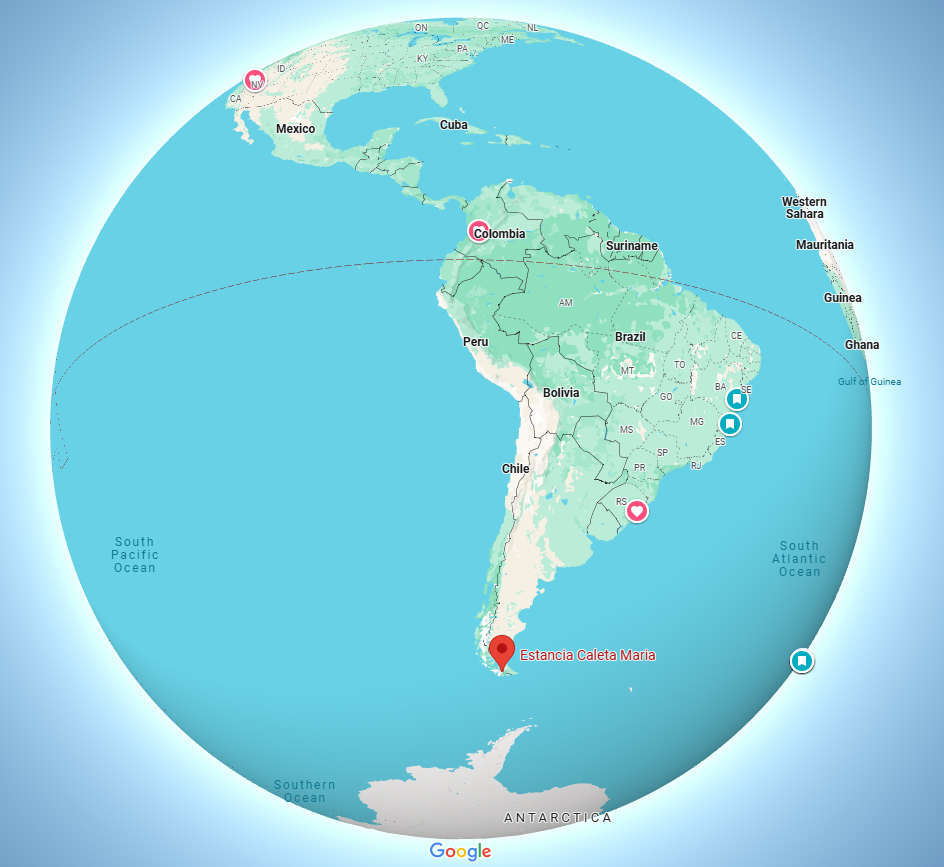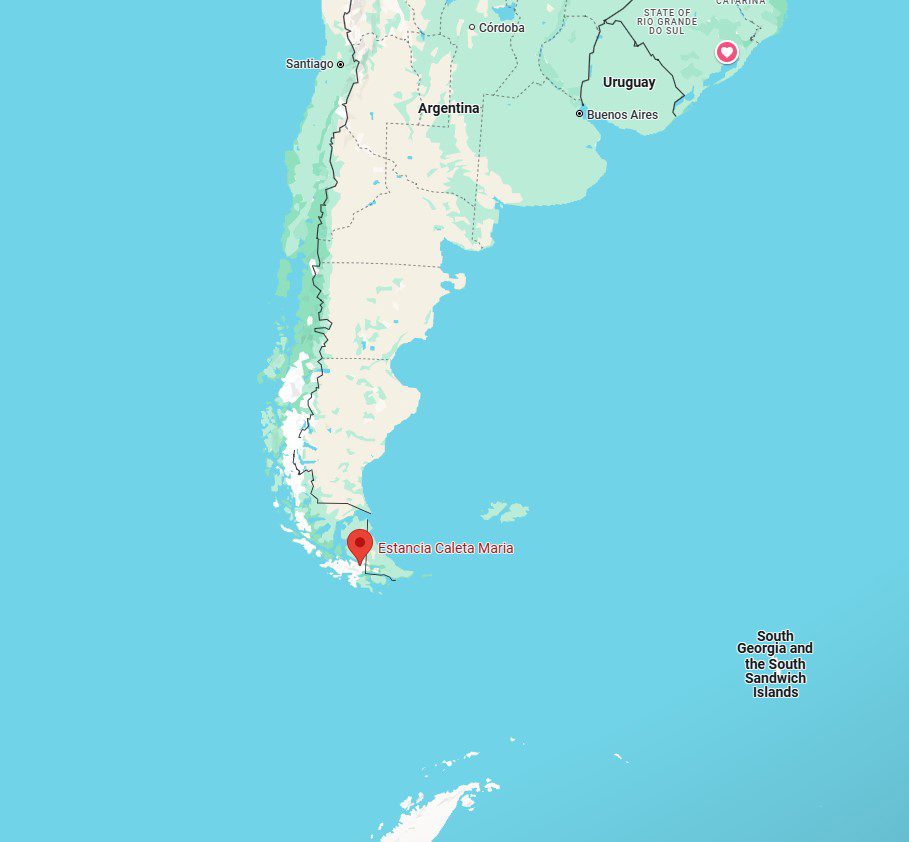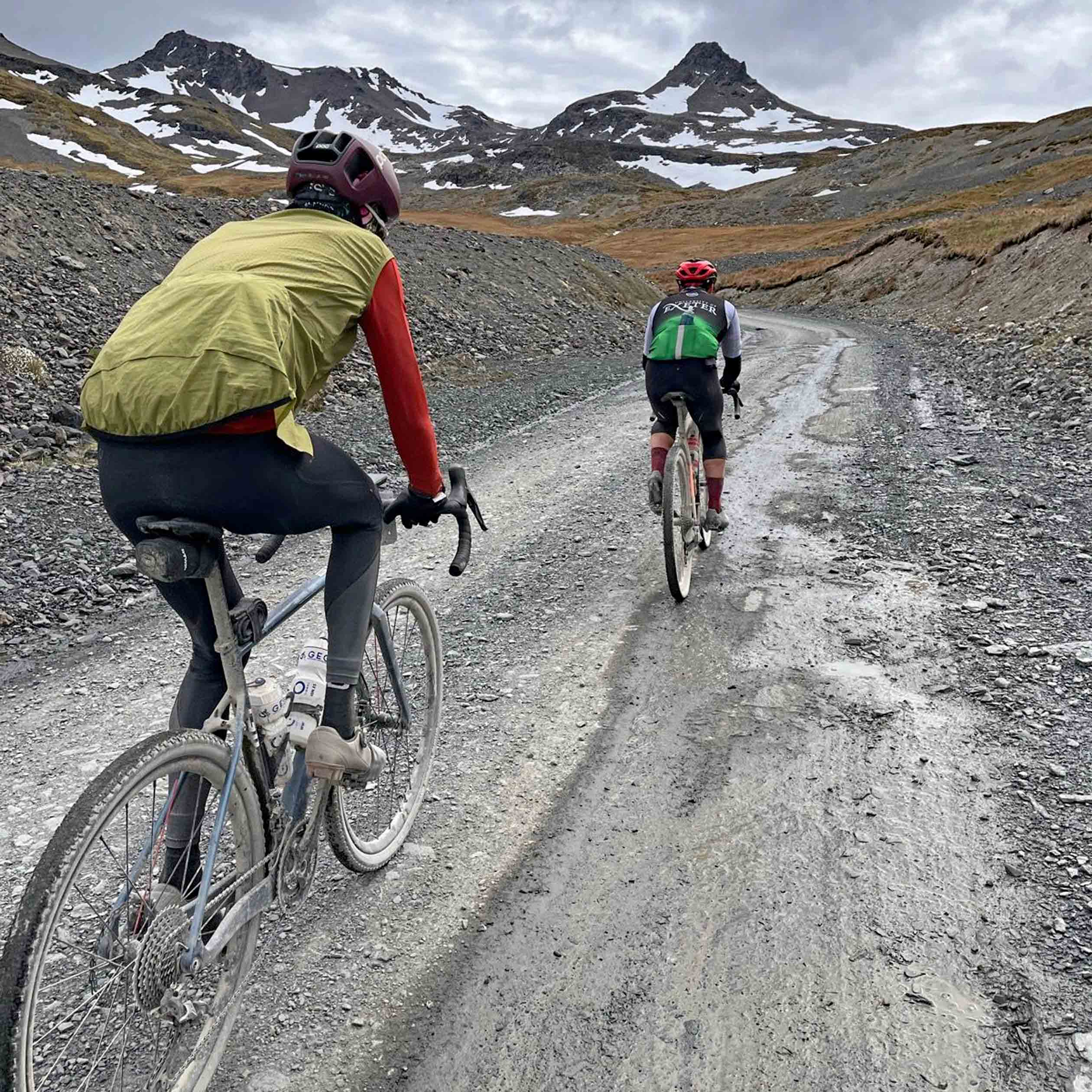Many of us have probably had the opportunity to ride off the beaten track before. After all, even in the most populous of regions, a gravel bike is often the perfect way to find a bit of solitude. Jorge Padrones decided that he wanted to really explore the wilderness though and headed off to Patagonia to try and find the end of the world. The Karukinka Gravel 2024 race seemed the perfect opportunity to explore somewhere that very few people have ever visited, let alone ridden a gravel bike. Read on to find out more.
After the attention grabbing headline, I will try to tell you about my experience of racing a gravel bike at the so called “end of the world. But first a spoiler, it is not just a headline - we arrived on a gravel bike to the southernmost road in Chile which is located in the Magallanes Antartica region. We came across a sign which said “End of the road” and it was not only that particular road ending there, it was the end of any road in that part of the world.
How remote is remote?
The race was taking place on the “Tierra de Fuego” island, but we were meeting (the riders and crew) in Punta Arenas, the last big city in southern Chile. We made our way together as there is no regular transportation to where the race was starting from. You start to be conscious of how remote this area is when you look into the time that it takes to get there. After a 13-hour flight to Santiago, you still have another flight of more than 3 hours in length to get to Punta Arenas. This is a long way from Europe all the way south. From there, once we met the rest of the riders and crew we took a minibus on another 8-hour trip to the start of our race at Villa Cameron.


Images courtesy of @Google
During our journey we had to cross the Straits of Magellan. We could almost sense that this was a big part of the human history, as it was discovered on the first circumnavigation around the world by Magellan and Elcano. We could feel our ferry was being moved by the waves of the choppy sea which we needed to cross to get to the Tierra de Fuego island. The island was named by Magellan as he could see from his ship many campfires which the locals used to warm up themselves during the region’s cold weather.
Our start point of Villa Cameron is a small village with 90 inhabitants that has just one small shop. Forget about restaurants or hotels - we were set to share the communal gym to spend the night on portable beds with our sleeping bag. Once we arrived, we had time to build up our bikes and have a stroll around the village to test the bike and stretch our legs after the long journey. This was a very small village, but this was the largest place we were going to see in the race!
We went for a spin after building our bikes and we saw what was waiting for us out there. Nothing. Nothing apart from amazing ocean views, pure nature and amazing landscapes with some wild animals. But no cars, no villages, no trucks, no coffee shops. None of the things we are used to but everything you need to be in the real and unspoiled nature.
From that day we (all the race participants and the crew) started to live as a community as we shared the meals and the space where we slept. Among the participants we had some professional riders, although they were turning into ex-pros in just a few days, Robert Gesink and Jetse Bol. During the race though there were no distinctions and they were part of the race community sharing with the rest of the participants.
Next morning after a good breakfast, some protocol ceremony with the local authorities and spending some time with the kids from the village we started the first stage of this Karukinka adventure on our journey to the end of the world, in the deep Patagonia. Our first stage was 98 km long with 800 meters ascent through an almost deserted landscape. We crossed a steppe with no vegetation, but with some wind, one of the protagonists of the Patagonian weather which very often blows at over 100 km/h.
Even if we shared the meals and we were building a community, this was a race, and we did not know what to expect. I thought we would be starting at a pace that we would be able to maintain, before later speeding up, but it wasn't like that. As soon as we were outside Villa Cameron, which was just one minute into the race, the race mode was on! Straight away there was a nasty climb in which we could see the first attacks and the racing kicked off. In my case, I was in a second group where we collaborated nicely to get to the end of the stage.
The last 10 km of the stage were beautiful as we got into a forest with small trees and the track had many twists and turns making it more exciting to ride. We were getting into the mountains, hence the change of landscape. We arrived at Lago Blanco, a big lake at the foot of the snow-capped mountains which we would have to cross the next day.
This area is known for having some of the best fishing spots in the world as the region is not well populated and tourism is minimal. In fact, the place where we spent the night was a small lodge with some cabins for the fishermen to use when they go to the lake. We again shared a dining room to sleep - this time with a beautiful view over the lake, the mountains and the sky in which during the austral summer the sun barely set. All this while we had a nice wood fire to keep us warm – it was an ideal set up to spend the night.
Next morning we woke up to see that it had been snowing all night. The weather in this part of the world is very unpredictable and variable, so the organisation took a wise decision delaying the start by one hour so the warmer temperatures could do their work and melt the snow. It was a big day as we would be crossing a huge mountain range with two long climbs and a total of 114 kms with approximately 2000 meters of accumulated climbing. A hard mountain stage.
As we said, weather conditions can change rapidly in Tierra de Fuego and you need to be prepared for everything, it can get very cold and snow or it can get warm and sunny with big temperature and condition changes over very short periods of time.
The beautiful course, crossing endless forests and peaks on a track full of hairpins, took us to one of the most beautiful and magical places I have visited, Caleta María. This was literally the end of the road and almost the end of the world. When you arrive, you could see a sign saying “End of the Road” but it is not just the end of that road, it is the end of the roads in this part of the world. You can’t proceed further south as there is not a way for it. The place is a closed bay on the Strait of Magellan just below snowy peaks. To our surprise, we were lucky to have a special guest welcoming us on our arrival. There was a family of King Penguins (who are not very common in this place), so it was just perfect.
In Caleta María there is nothing more than a couple of privately owned houses. No hotels, restaurants, shops, cafes, nothing… just two houses that the owner lent to the organisation so we could spend the night there sharing a loft and some rooms. It was a very basic setup, but it was warm and with all you need to enjoy being at the end of the world. On top of that, Jose the chef was waiting for us with a hot cup of soup to warm us up after the cold day out. Don Julio, the owner, is a cycling enthusiast and pioneer in the Straits of Magellan region. In the evening there was a campfire in which Don Julio told us stories about the place and how they started cycling in the area many years back and how he fallen in love with this beautiful, magic and remote place. Don Julio, who was almost 70 years old, was supposed to start riding the next stage with us, but instead of just doing the first kilometres he went all the way and finished the longest and hardest stage with us!
In Caleta Maria there was space for only 50-60 people including the crew. This is one of the reasons that this event will never be massive and only those 50 people per year will be the lucky ones who get to enjoy this unique experience. This event has born to be a boutique small event for just the lucky ones.
The third stage after the magical day of stage 2 was also going to be special. From Caleta Maria we started our way back to Villa Cameron, where the race started, and we were going to do it following the same path in reverse for one reason - there is no other way. Basically, the race followed the Y-85 road, the one and only one on the area, built by the Chilean army to show sovereignty of the land on this part of Tierra de Fuego and we got to the end of it.

But this road is a work in progress. The army keeps on working, opening the road through the next mountain range in their desire to connect by road and ferry with the most southern city in the world, Puerto Williams. They had around 10 kms of road built that were not yet open to the public, but the army opened them for us and received us at their base camp. We were the first ones to cycle on that road which went into deep valleys surrounded by glaciers, something really magnificent.
We were told they build around 1 km per year of road given the difficulty of this terrain, and as they are working on both ends simultaneously, they expect the full road to be open in the next 10 years. The Karukinka Gravel race hopes to be there to see it and in the future the plan for the race is for it to finish in Puerto Williams.
So, after a controlled 25 km ride to the army base camp, the stage proper started with a ride of 110 kms to Pampa Guanaco, our next destination. It is curious how the same road in reverse looked totally different and you see many things you did not see previously making it a completely new experience even if you already passed through those places. Again, we crossed the mountain range from the previous day, so another climbing stage with beautiful views, hairpin climbs, and fast and well surfaced descents to face some flat sections to finish off the day’s route.
This time we shared a communal building where all of us had to sleep in the same big room with mattresses on the floor and we tasted some of the local specialties for dinner. It was another secluded and beautiful spot to spend the night.
The next morning after a nice breakfast served from the organisation with many available options, we would be facing the last stage of this Karukinka Gravel 2024. A flat-ish stage in which one of the starring actors of Patagonia would be showing up - the wind. After a crazily fast paced start in a group, the first small hills made a selection so we were broken up into many small groups. We had strong (but not that strong according to the locals) headwind to complete the approximately 100 kms - having to fight with it and work in turns to beat it and get to Villa Cameron, where we started. We descended at times with amazing views of the Straits of Magellan.
After the podium celebrations we were spoiled with a typical “asado”, which comprises basically lamb slowly cooked on the fire and other meats. Vegetarian options were also always available and we started a party that went on into the early hours of the morning. Eventually we had to continue out on the street as even the communal building were we were having dinner (and the party) closed.
This was another aspect that makes this race very special - despite the event being competitive, the focus was on building community, and they really succeed in that. When we arrived, we were fellow racers, but after just four days we were friends. It has to do with the fact that we shared the sleeping rooms (and almost everything else too) and also it was a very small number of people which makes it easier to get to know and to speak with everybody.
Now that we can see event calendars full of so-called ‘fast gravel’ events, it was nice to also see events that focus on the roots of gravel riding. This event was about more than just a competition – it was about a passion we all shared and that built a community. Building a community can of course be complementary to racing - for example in this race, those seeking high level competition didn’t need to look enviously at the Gravel World Series, as we had some of our own world tour pros racing with us and setting the pace each day.
The organisation was very much up to the mark on this event. They have been already organising MTB events in Patagonia for more than a decade and you could see all that expertise reflected in this race. Focusing just on rider security, I think it was only on rare occasions where it was more than 20 minutes between seeing somebody from the organisation - at feeding stations, photographers, or the organiser’s cars that were just up and down the road making sure all was fine for the riders. This is something to appreciate as a participant, especially when you are riding at the end of the world!
The Karukinka Gravel Race was so many other things as well as being a race. It was a vital experience that somehow could change your perception about our day-to-day life. It showed us that there are still places in which the easy things we normally have everyday are impossible to have and at the same time, you realised how despite having almost nothing, you felt you had everything you needed. We felt privileged to have a direct connection with nature and the community and it was a real luxury to be here and to ride through a place where almost nobody had ridden before.